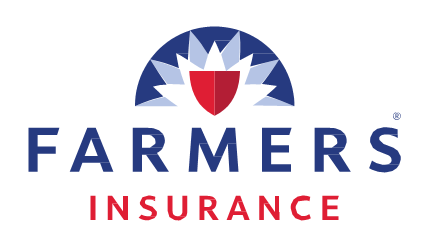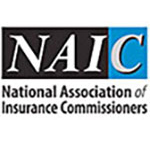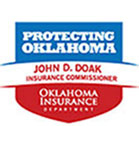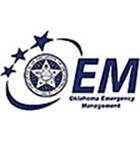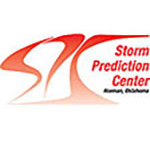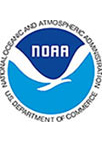DETAILED AGENDA
Monday, February 13
Pre-Summit OKC National Memorial and Museum Tours
(The pre-summit Tours are optional for an additional fee as listed on the Attendee Registration page. Space is limited!)
Tour One: 1:00 PM – 4:00 PM
Tour Two: 5:30 PM – 8:30 PM
Pre-Summit Disaster Symposium
(The pre-summit Disaster Symposium is optional for an additional fee as listed on the Attendee Registration page. Space is limited!)
Session 1:00 PM - 1:50 PM
The Economics of the “Big Shake” – Causes, Contracts and Concerns
During this session we will take a look at earthquakes from all the angles: What causes earthquakes, where are they occurring most frequently, we’ll debunk earthquake myths and take a closer look at earthquake insurance.
Active Threat: Assessing Threats and Response
In today’s world, every community must be prepared for the unthinkable. School shootings, theater attacks, and bombings at public events are happening more and more often. But there is a smart way to prepare for these types of threats. During this session, experts will give you the tools to assess threats of violence and mass attacks. Plus, you’ll learn the best practices for responding to an active threat.
Session 2:00 PM - 2:50 PM
Earthquakes – Proper Evaluation and Claim Handling
In our second session, we’ll discuss how to identify damage, how to determine if a structure can be repaired, rebuilt or replaced and when to hire an engineer along with special considerations for claims handling and commercial policies.
Chaos Control: Wildfire Preparation and Evacuation Plans
Every year wildfires threaten homes, businesses, wildlife, and people. During this session, you will learn the common conditions that lead to red flag advisories, uncontrolled wildfires, and firestorms. We will also discuss factors that should be considered before evacuation orders are issued and how to safely get everyone out safely.
No Presentation Materials Provided.
Session 3:00 PM - 3:50 PM
From the Midwest to the West Coast: How Earthquakes are Shaking Up Insurance
During this panel discussion, we will discuss earthquake exposures and challenges, take a look at the latest research and discuss efforts to reduce induced seismicity as well as innovative insurance solutions for states that are experiencing a contraction in their earthquake insurance market.
Speakers:
Jeremy Boak, PhD.Commissioner John Doak
Rep. Glen Mulready (Moderator)
Glenn Pomeroy, CEO
Disaster Area Search & Rescue
This course will assist Urban Search & Rescue task (US&R;) force members and emergency first responders in providing effective wide area search tactics and techniques following a natural disaster. Lessons learned and alternative actions will be presented to allow for more effective disaster response. The course is based on actual experiences from responses to the May 2013, Oklahoma Tornadoes and other US&R; deployments. The course will be presented from the perspective of both Fire Department personnel first on scene as well as US&R; Task Force team member operations. We’ll discuss the immediate actions necessary for those first on the scene, strategies for initial searches including search marking techniques, as well as procedures to sustain efficient operations.
Tuesday, February 14
Summit Day One
General Session One: 8:00 AM - 9:30 AM
Preparing for Natural Disasters: Insurance Regulators Helping You
Hear from the President and the new CEO of the National Association of Insurance Commissioners on how state insurance regulators work collaboratively to help each other in time of need. Wisconsin Insurance Commissioner and current NAIC President Ted Nickel will discuss how insurance regulators help each other when a major disaster occurs and what services are offered by the NAIC to support the disaster response efforts of insurance regulators. He will also cover anticipated work related to catastrophes in 2017. NAIC CEO Mike Consedine will discuss the NAIC’s engagement with the Federal government and Congress on natural catastrophe issues, including the 2017 reauthorization of the National Flood Insurance Program, private flood insurance legislation and rulemaking, and disaster preparedness.
No Presentation Materials Provided.
From Tornado Alley to Wall Street and the UN: How Storm Science is Entering Mainstream Finance and Global Public Policy*
During this session, we will delve into the challenge of understanding risk. Douglas will discuss how science is being used to better understand the frequency and severity of severe weather around the world and how the data is being used to predict the maximum foreseeable losses for insurers and reinsurers.
Breakout Session One: 9:45 AM - 10:40 AM
To Rewire or Not to Rewire: Evaluating Damage to Electrical Systems Caused by Lightning, Water, Wind or Power Damage*
This course will provide claims professionals knowledge on best practices for managing claims to building electrical systems following natural disasters, such as tornados and other weather events. An overview of the forms of wiring in a building, both power, and communication, will be provided, and real-life case studies will be utilized to illustrate best practices adjusters should employ when evaluating damage and determining coverage.
No Presentation Materials Provided.
Swift & Flood Water Response and Rescue Considerations
This class is a detailed class on the en route and initial scene Size-up of a swift/flood water emergency. It encompasses the Incident set-up of the Initial first responders and the Incident Commander. The importance of proper scene size-up and immediate actions is vital to determining whether or not a rescue is successful. This class provides information on setting search perimeters and parameters, to include developing an effective and efficient hasty search and quickly identifying the most likely points of detection for a victim and/or victims. This course will help immediate response crews to develop a quick and effective rescue strategy. This is a class specific to responding to a swift water/flood water emergency. It covers the necessary en route and arrival strategies that can facilitate a safe and effective water rescue response.
A Review of Significant U.S. Severe Weather Events and Tornadoes in 2016
Severe weather and tornadoes that impacted life and property in the United States during 2016 will be reviewed. Selected events will be presented in quasi-chronological order and described with photos, maps, and loops of satellite and radar data.
Rising Waters: The Causes, Consequences and Policy Implications for Flooding in the United States*
This presentation outlines the growing problem of flooding in the U.S., particularly in coastal regions. Results will be reported from observational research on the major drivers of flooding, the economic consequences for local communities, and specific mitigation techniques that can reduce losses over the long run. Examples will be presented at the regional and local levels to form a better understanding of how decision makers can implement programs that better protect residents from the adverse impacts of storm events.
Social Media and Imminent Threat Risk Communication
Social media are no longer new communication channels for imminent threats. However, their adoption and use are frequently based upon intuition and best practices suggested by marketers from media and private industry. This presentation will draw from social science research on the use of social networking sites to effectively communicate hazards, impacts and actionable risk information under imminent threat.
<
Breakout Session Two: 10:55 AM - 11:50 AM
New Insights and Technology for Hail Research*
As billion dollar hailstorms become more common and insurer losses continue mounting year after year, the Insurance Institute for Business & Home Safety (IBHS) has initiated a long-term, ground breaking research program focusing on hail. IBHS’ hail research initiative will investigate the performance of new and aged building materials when subjected to hail impacts; document differences between cosmetic and structural damage—and provide insights and guidance about best practices when it comes to evaluating, as well as repairing and replacing building components exposed to hail. The program also seeks to help people who manage and evaluate risk to understand how various building materials, systems, and types of roof covers are vulnerable to hail damage and to understand how improvements to forecasts and hail detection tools can lead to better understanding of the risk.
Dr. Tanya Brown-Giammanco, lead research engineer and director of hail research for IBHS, will discuss the latest on hail research including existing impact test methodologies and possible improvements, and scientific advancements and new technology used for field measurements. Dr. Matthew Kumjian, Assistant Professor of Meteorology at Penn State University, will join Brown-Giammanco to discuss new research into improving hail detection, forecasting, and modeling.Presentation Materials
More than Meets the Eye; Decision Making in the Face of Weather Hazards
Holding, postponing, rescheduling or cancelling concerts, athletic events, festivals, fairs, etc. in the face of natural hazards such as hurricanes, lightning storms, tornado threats, or intense cold or heat have become the subject of intense scrutiny as the potential for loss of life and property is weighed against the economic benefits of having these events. In addition, weather forecasts are inherently probabilistic and chock full of uncertainty, while at the same time, an event decision is deterministic, requiring a go or no-go outcome. This session will put you in the decision-makers' hot seat for many recent events that were weather threatened and ask you the question, “Yes, or No.” Session-goers will leave with a list of questions that each should ask before attending a fair, concert or athletic event that could be impacted by hazardous weather.
Moving Beyond Day 8: Long-Range Prediction of Tornadoes Across the U.S.
This presentation will focus on novel efforts to produce 2-to-3 week tornado activity forecasts across the U.S.
Agents Catastrophe Action Team: Collaboration for Recovery
During this session, we will take a look at the Agents Catastrophe Action Team (ACAT) Farmers Insurance has created in order to better prepare and respond to disasters and emergencies. We will hear the common struggles and pitfalls groups of this nature face; as well as what is crucial for success. Several case studies will be shown on the benefits of such collaboration between the industry, the community, and the disaster victims.
A Perspective of Tornado Preparedness and Understanding the Need for the Public to Know how to act as a Tornado Approaches
Two years ago at this conference, presenters spoke about hundreds of people showing up at facilities looking for shelter. It was discussed the resulting chaos of trying to accommodate those who showed up at a facility that was not prepared. The reasoning that people show up at all was lost in the discussion. They had simply nowhere else to go to seek protection.
During this session, attendees will gain a better understanding of how community planning helps the general public to understand what they can do to protect themselves against the dangers that tornadoes pose on our built environment and the lives within. Our speakers will present how effective planning and communication, as well as the latest research and developments in tornado protection provided by tornado shelters and safe rooms, would be an effective way of avoiding panic as a tornado approaches. This session contains presentations from industry-leading organizations: NIST will present information from their studies of the 2011 Joplin and 2013 Moore tornadoes supporting the need for community shelters and development of guidelines that enable communities to create safe and effective public sheltering strategies. AECOM will present on the latest guidance in FEMA P-361 for assessing community vulnerability to tornado hazard and effective operation of safe rooms. Operational topics will include community outreach and notification as well as safe room access and entry considerations.Presentation Materials
General Session Two: 12:00 PM - 1:20 PM
The Impact of the Trump Administration and Republican Congress on State Insurance Legislation in 2017
During this brief session, Commissioner Considine will provide his thoughts on what the new administration and congress means for state insurance legislation. The presentation will include the future of the Federal Insurance Office, Dodd-Frank Banking Regulation, changes to the Affordable Care Act and state legislative participation and protection from international encroachment of state-based regulation of insurance.
No Presentation Materials Provided.
Louisiana Under Water: The Aftermath of a Storm with No Name
Most storms that do major damage have a name: Sandy, Katrina, Andrew. But in 2016, a storm tore through Louisiana, leaving behind an estimated $10-$15 billion dollars in damage, without an official name. It wasn’t a hurricane. It wasn’t a tropical storm. It wasn’t even a tropical depression. But the historic and deadly flooding that storm caused has been called the worst natural disaster to strike the United State since Hurricane Sandy, and the deluge of floodwaters caught many by surprise despite warnings. And now in the aftermath, more than 80 percent of the damaged homes do not have flood insurance. How did this happen? During this session, experts will break down how this storm was handled from beginning to end. You’ll hear how meteorologists communicated the risk and warnings and how emergency managers responded with rescue efforts. Attendees will gain unique insight from this unnamed storm to better prepare for the next.
Presentation Materials
Breakout Session Three: 1:40 PM - 2:35 PM
When the F-5 has Passed... The Danger Continues*
The program will discuss the difficulties and pitfalls of investigating tornado claims, other possible elements to consider in evaluating causation, patterns, and practices to avoid, remembering the Unfair Claims Settlement Practices Act and the consideration of the duties of good faith and fair dealing.
No Presentation Materials Provided.
Damage Assessment: Emergency Managers Use Drone Mosaics to Survey Damage
On Feb 24th, 2016 an EF3 tornado touched down in Essex County, Virginia leaving 25 people injured and dozens of homes damaged or destroyed. The community, having never experienced a tornado before, was left in shock.
During this session, you will hear how emergency managers used drones to create damage assessments which led to their federal emergency declaration and possibly how your community could do the same. We’ll also hear first-hand from the drone pilot that assisted with the aerial damage assessments.Presentation Materials
It's All Wind: Communicating Damaging Wind and Tornado Threats in an Impact-Based Warning Environment
Over the past several decades, damaging thunderstorm (aka straight-line) winds have killed more Oklahomans than weak tornadoes, but warnings for those dangerous windstorms are often ignored. This presentation will look at the spectrum of damaging wind threats from thunderstorms and address this question: given the history and types of weather threats we face, how can we best provide warnings for the storms that pose a real threat to life and safety, but weigh our actions against acting so often that warnings lose their intended response from the public?
Privatization: A Complement to The National Flood Insurance Program*
Over time, it has become increasingly clear that the NFIP is not an ideal solution for all consumers. Issues with NFIP mapping and rates have led some consumers to pay more for
coverage than they otherwise could. While the National Flood Insurance Program was originally established because insurers
were not willing to underwrite flood risks, over time, some insurers have entered the market, particularly in the surplus lines markets, and have been selectively writing some flood risks. This has provided consumers additional and in some cases more affordable flood insurance options. This session will explore the private flood insurance market and its regulation, obstacles to increased participation by private insurers and solutions to such issues as well as concerns that have been raised regarding further privatization of flood insurance.
How to Communicate in a Mobile World
Emmy Award-winning broadcast journalist turned award-winning CEO Brad McMullan will dive into how mobile technology has changed relationships, news and weather communication, and marketing.
No Presentation Materials Provided.
General Session Three: 2:50 PM - 3:50 PM
In the Eye of the Storm: Perspective From an Engineer, Meteorologist and Storm Chaser
“In order to understand how something falls apart, you have to learn how it is put together.” Tim Marshall, a veteran storm-chaser, meteorologist and structural engineer, not only forecasts the storm, he chases it then returns to assess the damage that’s left behind. Marshall is an expert unparalleled in the field of meteorology and has countless fascinating stories to tell. Last year, Marshall was recruited to chase and deploy a series of weather-instrument pods INTO the tornado. During this session, Marshall will detail that chase as well as what he has learned in nearly 30 years of surveying storm damage.
Breakout Session Four: 4:05 PM - 5:00 PM
Perspective: How Different Professionals View Catastrophe*
A residential insurance claims adjuster, an engineer and a mediator will individually examine their point of view of a wind catastrophe. Then we will walk the attendees through some hypotheticals to illustrate how the various perspectives can work together for a successful claim
resolution.
Getting the Warning Out: Standardizing Siren Recommendations to Eliminate Siren Fatigue
Siren fatigue and siren confusion are dangers to every community. During this session, we will focus on issues related to outdoor warning siren policies. Emergency managers in Minnesota have joined with the National Weather Service Forecast offices to develop a standardized set of siren recommendations for adoption by jurisdictions in Minnesota. The recommendations and siren trigger standards are now in use across the seven-county Twin City metro and many other counties in Minnesota.
Preserving the Evidence: Multi-Platform 3D Reality Captures for Tornado Damage
Detailed analysis of tornado damage is critical for understanding tornado-structure interactions, for calibrating and validating computer models or physical simulations and for validating or correcting EF scale wind speeds.
Narrowing the Path of Storm Damage Makes Communities More Resilient
Year after year, thousands of inland buildings are damaged or destroyed by very common, relatively low-severity windstorms. Local communities are torn apart by natural events that could have been defended against. Implementing and enforcing building codes is just not enough and will take time. In the meantime, we must improve the "self-defense" systems of buildings standing in harm’s way—to infuse resilience into new and the currently brittle construction in the Plains States. The Insurance Institute for Business & Home Safety (IBHS) has developed the FORTIFIED Home™ program which is based on the only hazard-specific resilient building standard that can help reduce both the frequency and severity of damage from both hurricane and high-wind & hail through property loss mitigation.
Tanya Brown-Giammanco, lead research engineer and director of hail research for IBHS, will discuss the science behind how narrowing the path of damage can not only eliminate the damage caused by EF-0 and EF-1 level damage from convective storms but also significantly reduce the damage caused by EF-2 level damage. Mark Fox, Warning & Coordination Meteorologist for the National Weather Service in Fort Worth, will share experience and examples from the recent severe weather in the Dallas-Fort Worth area in December of 2015. His research quantifies the various levels of damage caused by EF-0 – EF-5 level damage across the metroplex, highlighting the need to build stronger and safer to reduce these high number of losses.Presentation Materials
More than Meets the Eye: Decision Making in the Face of Weather Hazards
Holding, postponing, rescheduling or cancelling concerts, athletic events, festivals, fairs, etc. in the face of natural hazards such as hurricanes, lightning storms, tornado threats, or intense cold or heat have become the subject of intense scrutiny as the potential for loss of life and property is weighed against the economic benefits of having these events. In addition, weather forecasts are inherently probabilistic and chock full of uncertainty, while at the same time, an event decision is deterministic, requiring a go or no-go outcome. This session will put you in the decision-makers' hot seat for many recent events that were weather threatened and ask you the question, “Yes, or No.” Session-goers will leave with a list of questions that each should ask before attending a fair, concert or athletic event that could be impacted by hazardous weather.
Twister Mixer: 5:00 PM – 6:00 PM
Wednesday, February 15
Summit Day Two
General Session Four: 8:00 AM - 9:30 AM
Is Building Fortified Homes Worth It?*
Rebuilding a community after a devastating tornado can take years. The process can be arduous and slow, financially burdening victims and the city itself. That’s why the Institute for Business & Home Safety (IBHS) wants to help storm victims and their communities bounce back quicker than ever through their FORTIFIED Home program. The program calls for engineering and building standards designed to strengthen new and existing homes against high winds and hail. But there is a cost for building stronger homes. In this session, speakers will examine the cost effectiveness of such an endeavor. They will address concerns raised when building a strengthened home and talk about how a FORTIFIED home performs in the real estate market.
Presentation Materials
Breakout Session Five: 9:45 AM - 10:40 AM
Business Interruption: Beyond the Basics - What Every Adjuster Needs to Know*
Our presentation will focus on some of the more complex time element (business income / extra expense) issues that we’ve encountered with tornado claims. We will provide case studies to better illustrate each issue. Some of the specific areas we will discuss include projecting loss period results, dependent properties coverage, extended business income, extra expense, and civil authority.
Seeking to Understand Adaptation Strategies Emergency Managers Use to Meet Their Severe Weather Information Needs
This talk aims to generate discussion about how emergency managers and their constituents (e.g., fire, police) adapt to gaps in severe weather information to meet their decision-making needs. I will show examples from my research.
Eyes in the Sky: Detecting Tornadoes from Outer Space
At times it can be difficult to survey tornado paths from the ground. Tornadoes occurring in heavily forested areas or sparsely populated regions often are overlooked resulting in errors in tornado climatology and underestimates of tornado risks. During this session, you will learn about how NASA’s earth-observing satellites (EOS) assist in the location of tornado damage paths and are being integrated into National Weather Service Damage Assessment Toolkit interface for guiding storm damage surveys, and also about digital imaging techniques used to automatically identify tornado tracks by satellite data.
The Aftermath Isn't Just Property Damage: Tornadoes Can Spawn Identity Theft*
Tornadoes not only destroy homes, they destroy the companies we do business with and in the process they scatter property, documents and electronics containing confidential information across the street, town, even state lines.
In shock and open to help from total strangers, victims of natural disasters are easy targets. The last thing you or your clients need to worry about in the aftermath of a storm is becoming a victim of identity theft, fraud or a scam.Presentation Materials
Presentation Materials
Words, Understanding, Actions: Making Sense of Communicating about Severe Hazards
How does the warning messaging about severe weather and other natural hazards connect with how people make choices in everyday situations that turn rapidly into extraordinary circumstances? Understanding how context plays a critical role in how people come to understand and integrate information into their perspective is a vital part of planning how to create more weather aware and severe weather ready communities and individuals. Communication is a complex, rich, and complicated process built on the patterns and characteristics of human perception and memory. How we learn, how we perceive, and how we make decisions are fascinating and crucial knowledge for anyone seeking to better understand, predict, or guide human behavior.
No Presentation Materials Provided.
Breakout Session Six: 10:55 AM - 11:50 AM
Unmanned: Drone Use & the Rules that Apply
Unmanned Air Systems aka Drones are stepping up to take their place as a vital tool for the insurance industry and emergency managers around the world. But as more and more UAS’s take the sky the industries are scrambling to ensure the proper use of these specialized tools. During this session, we will discuss FAA guidelines, rules, best practices as well as the real-life application of drones for disaster preparation and response.
State Disaster Recovery: Providing Relief When Federal Assistance is Not an Option
How the State of Arkansas Manages Its Individual Assistance and Public Assistance Recovery Programs.
Getting the Warning Out: Standardizing Siren Recommendations to Eliminate Siren Fatigue
Siren fatigue and siren confusion are dangers to every community. During this session, we will focus on issues related to outdoor warning siren policies. Emergency managers in Minnesota have joined with the National Weather Service Forecast offices to develop a standardized set of siren recommendations for adoption by jurisdictions in Minnesota. The recommendations and siren trigger standards are now in use across the seven-county Twin City metro and many other counties in Minnesota.
After the Storm: Errors and Omissions Exposures Following Natural Disasters*
More often than not, the second wave of claims against insurance agents by their clients follows a natural disaster. As parties find themselves without the coverage they expected after a catastrophe, it appears to be a natural reflex for them to look to their insurance agents and brokers to fill the perceived gap. Sometimes, this second wave, for whatever reason, is just a ripple. Katrina, following on the heels of a year that saw four major storms sweep through Florida, generated a veritable tsunami, as did Ike and Sandy. Similar patterns are seen after floods, earthquakes, and even wildfires.
For the most part, the types of allegations and claims that surface after an individual loss (such as a house fire) are the same we see after a catastrophe, just on a greater scale because of the number of people impacted—failure to procure a certain kind of coverage, failure to place coverage at all, failure to obtain adequate limits, or failure to advise certain coverage was necessary. But there are certainly best practices that can minimize the resulting exposure and enhance the likelihood of a successful defense. In this presentation, we will address the specific claim trends with a particular focus on steps agents and brokers to avoid errors and omissions claims or minimize their impact.
Nature vs Nature: The Animal Victims of the 2013 Oklahoma Tornadoes
This session focuses on some of the forgotten victims of Mother Nature's wrath with an in-depth discussion of how wild and domestic animals are affected by tornadoes. Our experts will discuss how best to respond to wounded animals big and small, how to handle the deceased and how to reunit misplaced animals with their owners.
Speakers:
Zoe MidyettJenifer Reynolds (Moderator)
Dr. Byron Schick
Dr. Michael Wiley
General Session Five: 12:00 PM - 1:45 PM
The Chase: Predicting, Chasing and Sounding the Alarm
In the TV weather game, stakes and expectations are extremely high. Viewers want meteorologists to predict the future. While they don’t have crystal balls, expert weather teams do have state-of-the-art technology, insight from scientific breakthroughs and decades of experience. Together, meteorologists and storm chasers are able to zero in on a tornado’s target minutes or even hours before the tornado actually forms. KOCO Chief Meteorologist Damon Lane and veteran storm chaser Chris Sanner will share the roadmap that enabled them to capture cinematic video of an EF-4 twister near Wynnewood, OK. They’ll also share how the dramatic footage had a tremendous impact on those in the danger zone.
No Presentation Materials Provided.


